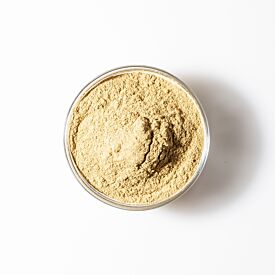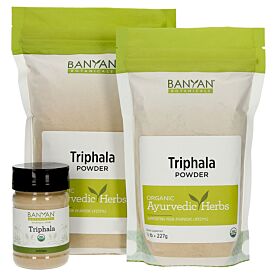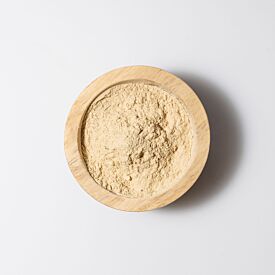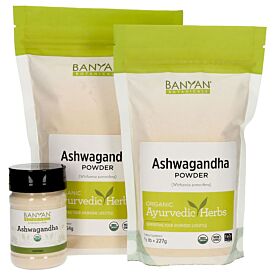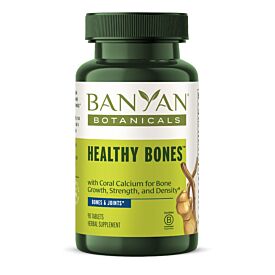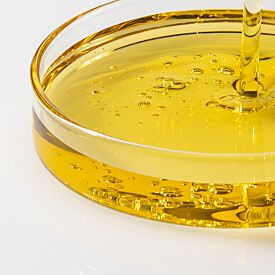Bringing Health to the Bone
A 58-year-old (vata-pitta prakriti) female comes to you wanting help with her bones. She is thin and frail, with joint pain, cracking joints, and she had a fracture of her wrist a couple years ago. She drinks organic milk daily and has cottage cheese as a snack in the afternoon. She tells you that she has always had issues with constipation, low back pain. When she was a baby she was bottle-fed. What therapy would benefit her bones most?
- Nasya
- Vamana (vomiting)
- Fast-paced, vinyasa flow yoga sequences
- Basti (enema)
- Calcium supplementation
Answer: D
This woman’s history of cracking joints and a recent bone fracture alone clues us in to depleted bone tissue (asthi dhatu kshaya). We also see strong signs of vata (constipation, thin frame, low back pain).
Basti will target the seat of vata and nourish the colon. It is the go-to for vata depletion and imbalances. Calcium supplementation may not prove to be very beneficial since she already has good sources of calcium in her diet (milk and cottage cheese) and she may have a poor microbiome (history of being bottle-fed). Nasya alone will not target vata, nor will vamana (vomiting), which is traditionally used in cases of excess kapha imbalances. Additionally, vata imbalances benefit most from slow and steady yoga sequences (as opposed to fast-paced sequences).
An integrative, Ayurvedic approach to building bone tissue will look at important nutrients, the seat of vata and source of nutrition (the colon and the rest of the gastrointestinal tract), and proper exercise (yoga) for bones.
1. Proper Nutrition
Calcium and vitamin D is not at all the whole story to proper nutrition for the bone tissue. Consider all of these.
- Vitamin K. Vitamin K is gaining attention for its role in bone development. Supplement with vitamin K (but pay careful attention to follow directions as this can thin the blood in high doses).1
- Mineral salt. There are over a dozen minerals that the bones need and use. Rather than supplementing each one of them, buy mineral salt and use this in your cooking.
- Vitamin D. Spending healthy time in the sun (not at high noon and not until your skin burns!) is the most natural way to increase vitamin D levels through the enzymes in the skin. But you can certainly supplement with vitamin D3.
- Calcium. Calcium in moderation is not a bad thing. Recommend soaking a handful of sesame seeds and chewing them in the morning.
- Healthy Bones. This tablet has a blend of coral calcium and ashwagandha, which are nourishing to vata and the bones. The astringency of arjuna further grounds vata and helps in the assimilation of the many minerals and vitamins needed for healthy bones.
2. Nourish the Colon
As we saw in the last Vine, the colon and its health can make a huge impact on the health of bones. Its membrane is integrally related to the membrane of the bone and now, with the help of modern science, we understand why Ayurveda made this claim thousands of years ago. Our goal then, in the case of asthi dhatu kshaya is to nourish the membrane with hydration and nutrients.
- Basti will accomplish both. For a full description of basti, please read the Basti: The Primary Treatment of Vata Vine. In this case, however, strongly consider oil (anuvasan) basti with sesame oil, as sesame is a great source of calcium. The classical texts of Ayurveda mention a number of different types of basti, including milk basti. Consider an ashwagandha milk basti (use raw, organic milk) because of ashwagandha’s positive benefits to bone and ligaments and milk as a source of calcium.
- Maintain regular bowel movements with Triphala. If there is constipation, there will be toxin (ama) build-up, which can clog channels and prevent the proper absorption of nutrients.
- Support the flora of the gastrointestinal tract that will help in the creation and absorption of many important nutrients for the bone. Probiotics is a great way to do this (try cycling between different brands for a more complete and diverse bacteria flora). Prebiotics (the food that this bacteria feeds on) is also very important. Ghee from grass-fed cows is a fantastic natural prebiotic, as are fiber-filled veggies.
- Keep channels moving with proper hydration. Without the water element, channels cannot maintain flow. Emphasize lots of hydration (room temperature water or warmer).
3. Yoga for the Bones
Yoga will provide the proper stress to bones that is needed to stimulate the healthy functioning of those osteoblasts (cells that form bone) and build healthy bone. We know that weight-bearing exercises are good for this reason as well.2 Consider yoga with these recommendations.
- Target a healthy amount of tension on the pelvis (the root of bone tissue and an important source of bone marrow) with lunges and hip openers. Virabadhrasana (Warrior pose) I, II, and III and its many variations will do this, as will Utthita Trikonasana (Extended Triangle pose), Utthan Pristhasana (Lizard pose), Malasana (Garland pose), and Utkatasana (Chair pose).
- Focus on sustained movements (stay in poses for a long period of time) as opposed to flowing in and out of poses like a vinyasa sequence.
- Calm vata (click here for more information on vata-pacifying yoga) with slow movements and balancing poses (Tree pose), which will also help with balance and fall prevention, which is really important in those with poor bone health.
- Be careful about doing intense twists and back bends in those with poor bones, as they can put too much strain on the spine.
There is also that part of yoga that focuses on the spirit and the energy of the client. Ask these questions to cue in on important energetic defects that can be contributing to the poor functioning of this tissue layer.
- How supported does your client feel?
- Does the client feel like a victim of the world or is the client able to feel an inner sense of support?
- Does the client give support to others or does the client tend to seek support from others?
- Is there a sense of confidence? What about during childhood?
- Does the client feel secure? If not, why not?
With this integrative view of the bone tissue the client can make huge strides in bone health. One step is not more important or less important than the other. It takes a fully functioning body to nourish this deep tissue layer.
References
1 Dr Mercola, “The ‘Calcium Lie’ Every Woman Should Know About,” September 4, 2015, http://articles.mercola.com/sites/articles/archive/2010/12/21/osteoporosis-prevention-and-treatments-exposed.aspx.
2 Rebecca Taylor, “Weight-Bearing exercise: 8 Workouts for Strong Bones,” WebMD, retrieved September 7, 2015, http://www.webmd.com/osteoporosis/living-with-osteoporosis-7/exercise-weight-bearing.





